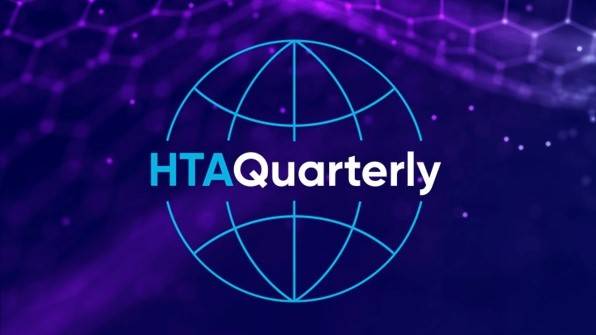Unlocking the potential of Nordic real-world data for PICO assessments in European HTA

The increased focus on PICOs

The intended outcome of JCA is to establish the relative effectiveness and safety of a new health technology as compared with new or existing technologies. This starts with a PICO (Population, Intervention, Comparator, Outcome) scoping process to inform which research questions must be addressed in the submission package and consequently determine the data that will be requested.

Nordic health registries to explore PICOs
The Nordic countries are renowned for their comprehensive, high-quality, and long-term health registries, often spanning decades. These registries have the potential to act as pivotal sources of RWD, supporting PICO assessments for both pharmaceuticals and medical devices. Importantly, the personal identification number used in the Nordics enables seamless integration of data across multiple sources and facilitates individual-level, multivariable analyses.

How can RWD support each PICO dimension?
How useful is Nordic RWD to support a general PICO assessment?
- Comprehensive coverage: Disease-specific quality registers, in Sweden in particular, support a wide range of therapeutic areas — from oncology and orthopedics to psychiatry and endocrinology.
- Linkability: The use of personal identity numbers allows linkage across registries, enhancing data depth and reliability.
- Generalizability: Although rooted in the Nordic context, the data are sufficiently robust to support broader European population studies. The national registries and many common registries across the Nordic countries cover a very large total population (the total Nordic population amounts to nearly 30,000,000 people).
- Efficiency: With the setup of data sources and an RWD protocol, PICOs can be updated continually with minimal effort, ensuring continuous alignment with current evidence.
- The sheer volume and granularity of disease-specific quality registers (specifically in Sweden) provide detailed data that can significantly enhance HTA evaluations, especially for medical devices where usage patterns and outcomes vary widely.
A study to explore the availability and capacity of Nordic health registries
General findings
Figure 1. Nordic health registries by therapeutic area



Next, relevant registries were evaluated for their ability to support population characterization, intervention tracking, comparator identification, and outcome measurement for the two hypothetical therapies.
Sources for registry data to support a PICO assessment for both the fictional oncology and medical device products were identified in each of the Nordic countries. There were seven relevant registries for the oncology product (Cenpicomab), of which four were available in all the Nordic countries and one was a disease-specific quality registry available in three countries.
For the medical device (Cenpicohip), there were four relevant registries, of which one was available in all countries and two were quality registries specific to the therapeutic area available in three countries.

Usefulness for respective PICO dimensions
(P)opulation
(I)ntervention
(C)omparator
(O)utcome
Final remarks
This article summarises Cencora’s understanding of the topic based on publicly available information at the time of writing (see listed sources) and the authors’ expertise in this area. Any recommendations provided in the article may not be applicable to all situations and do not constitute legal advice; readers should not rely on the article in making decisions related to the topics discussed.
Connect with our team

Sources
- Directorate-General for Health and Food Safety. Updated: List of ongoing joint clinical assessments. https://health.ec.europa.eu/latest-updates/updated-list-ongoing-joint-clinical-assessments-2025-09-02_en
- European Commission. Joint Clinical Assessments. https://health.ec.europa.eu/health-technology-assessment/implementation-regulation-health-technology-assessment/joint-clinical-assessments_en
- Joline Schmidt K, Konstanski M, Sauer A-K, et al. Understanding Joint Clinical Assessment scoping requirements in oncology: results of a rapid PICO prediction exercise via an in-house expert network. https://www.ispor.org/docs/default-source/euro2024/isporeurope24hta200posterfinal145403-pdf.pdf?sfvrsn=323db99a_0
- Laugesen K, Ludvigsson JF, Schmidt M, et al. Nordic health registry-based research: a review of health care systems and key registries. Clin Epidemiol. 2021;533-554.
- Member State Coordination Group on HTA (HTACG). 2024. Guidance on the scoping process.
- Nordforsk. Joint Nordic registers and biobanks: a goldmine for health and welfare research. https://www.nordforsk.org/2014/joint-nordic-registers-and-biobanks-goldmine-health-and-welfare-research
- The Swedish Research Council (n.d.). Guide till register- och hälsodata. https://dataguiden.se/
Cencora.com is providing automated translations to assist in reading the website in languages other than English. For these translations, reasonable efforts have been made to provide an accurate translation, however, no automated translation is perfect nor is it intended to replace human translators. These translations are provided as a service to users of Cencora.com and are provided "as is." No warranty of any kind, either expressed or implied, is made as to the accuracy, reliability, or correctness of any of these translations made from English into any other language. Some content (such as images, videos, Flash, etc.) may not be accurately translated due to the limitations of the translation software.
Any discrepancies or differences created in translating this content from English into another language are not binding and have no legal effect for compliance, enforcement, or any other purpose. If any errors are identified, please contact us. If any questions arise related to the accuracy of the information contained in these translations, please refer to the English version of the page.



